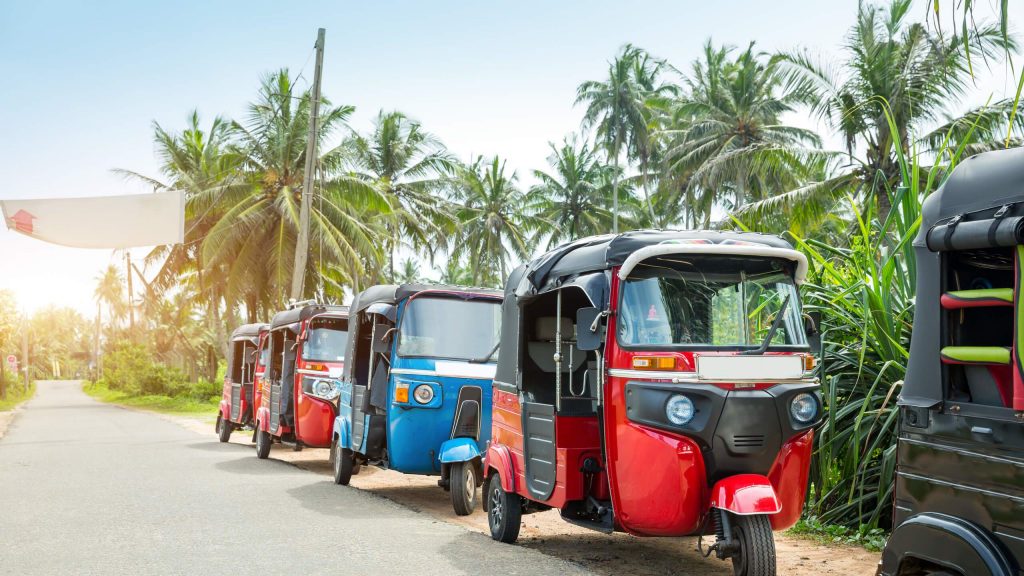An auto rickshaw is a motorized development of the traditional pulled rickshaw or cycle rickshaw. Most have three wheels and do not tilt. An exception is in Cambodia, where two different types of vehicles are called tuk-tuks, one of which (also known as a remorque) has four wheels and is composed of a motorcycle (which leans) and trailer (which does not).
The auto rickshaw is a common form of urban transport, both as a vehicle for hire and for private use, in many countries around the world, especially those with tropical or subtropical climates, including many developing countries. Bajaj Auto is the world’s largest auto rickshaw manufacturer.

Japan has exported three-wheelers to Thailand since 1934. Moreover, the Ministry of Posts and Telecommunications of Japan donated about 20,000 used three-wheelers to Southeast Asia. In Japan, three-wheelers went out of use in the latter half of the 1960s.
Japan has exported three-wheelers to Thailand since 1934. Moreover, the Ministry of Posts and Telecommunications of Japan donated about 20,000 used three-wheelers to Southeast Asia. In Japan, three-wheelers went out of use in the latter half of the 1960s.
Wikipedia
In 1947 Corradino D’Ascanio, aircraft designer at Piaggio and inventor of the Vespa, came up with the idea of building a light three-wheeled commercial vehicle to power Italy’s post-war economic reconstruction. The Piaggio Ape followed suit.

In 1947 Corradino D’Ascanio, aircraft designer at Piaggio and inventor of the Vespa, came up with the idea of building a light three-wheeled commercial vehicle.
Auto rickshaws in Southeast Asia started from the knockdown production of the Daihatsu Midget, which was introduced in 1957.
There are many different auto rickshaw types, designs, and variations. The most common type is characterized by a sheet-metal body or open frame resting on three wheels; a canvas roof with drop-down side curtains; a small cabin at the front for the driver (sometimes known as an auto-wallah), with handlebar controls; and a cargo, passenger, or dual purpose space at the rear.
